Snowcraft I is called "Happy Camp” and is mandatory survival training for anyone going off-base at McMurdo. Following is the preamble we got in our letter from the FSTP (Field Safety Training Program). "You are scheduled to attend our basic overnight course: Snowcraft I. First of all, this should be an enjoyable and educational experience, not a cause for anxiety. Many people often find it to be one of the high points of their season.” For some reason this note did NOT lessen my anxiety!
There were 20 campers in our crew and three trainers: Kevin, Galen and Daniel. The trainers all have extensive mountaineering and cold weather experience and were awesome at providing us lots of tips about surviving in cold, windy, and generally nasty conditions. The good and bad news is we actually got to practice in cold, windy, and generally nasty conditions! We were the first happy camp of the regular season, and it got down to -60 F with windchill. It should get easier for future campers to be happy as the "summer” continues to get warmer…
We started out indoors with some basic training information and then we loaded into a large vehicle called the Delta (photo in tomorrow’s post) and headed out past Scott Base, where the New Zealand Antarctic program is based, onto the permanent sea ice of the Ross Ice Shelf.
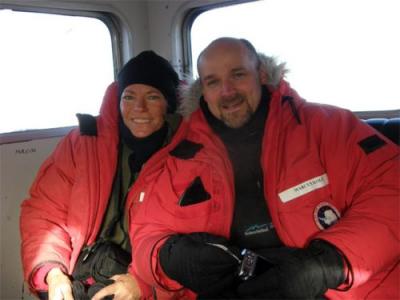
Marcus Kolb and I in the Delta.
The snowmobiles at the Snowcraft Camp wouldn’t start so we hauled our orange bags with our ECW gear in them to the instructors’ hut.
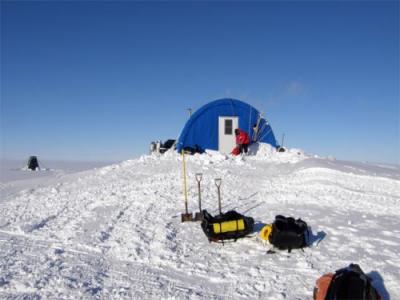
The outside of the instructors’ hut.
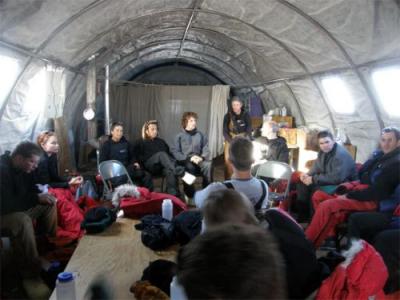
The inside of the instructors’ hut.
Inside the instructor hut, Galen taught us how to use the stoves. The field camps use MSR (Mountain Safety Research) stoves as they are the most reliable in cold weather. We still had to trouble-shoot problems with three of our four stoves to get them to work though. This is really hard because you lose a lot of dexterity when you have thick gloves on. But if you take your gloves off then your fingers are exposed to metal at really cold temperatures, conducting heat away from your skin and leading to frost bite.
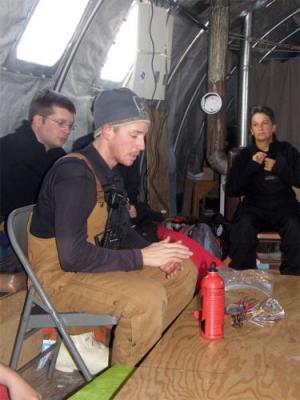
Galen teaching us how to light and trouble-shoot the MSR stoves.
We went outside and started getting our camp set up for the night. We set up two Scott tents – at style of canvas tent that Scott and others used on the early 20th century expeditions to Antarctica. They will hold four people fairly comfortably. We learned how to use "deadmen” and truckers’ hitches to anchor the tents against the wind. Then we built a snow wall to protect our smaller mountain tents from the wind, and set up six mountain tents using the same wind-protection system as with the Scott tents.
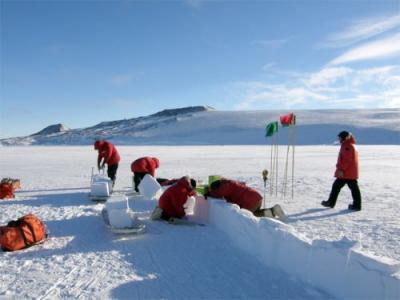
Building the snow wall
We also learned how to build a quinzhee; the Inuit word for a snow shelter. Unlike an igloo, made of snow blocks, a quinzhee is a pile of snow that is compacted and dug out to create an opening in the middle for the shelter.
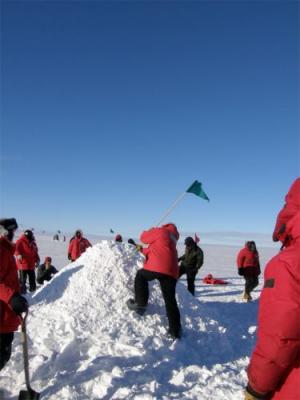
Building the Quinzhee
Some of the happy campers also dug trenches in the snow and then made snow blocks to cover the top of the trench after they crawled inside with their sleeping bags. I wasn’t that brave, so I spent the night in one of the Scott tents.
Our food was all dehydrated packages so we just had to boil water for dinner. That still seemed to take an enormous amount of time to heat enough water on the few stoves we could get to work for 20 people to get hot drinks, dinner, and fill water bottles with hot water to take to bed with them.
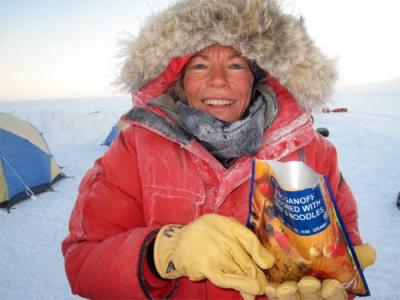
I am getting excited about eating my rehydrated dinner.
I was relatively warm inside the tent, on two foam pads, with a down sleeping bag, and a fleece liner, and three layers of long underwear on. The hardest part for me was listening to other people walking on the snow and thinking that they might be too cold to sleep and were going to just walk all night long. It was really noisy when people walked – the snow crunched under your feet so you had to stop walking to talk to someone or you couldn’t hear them.
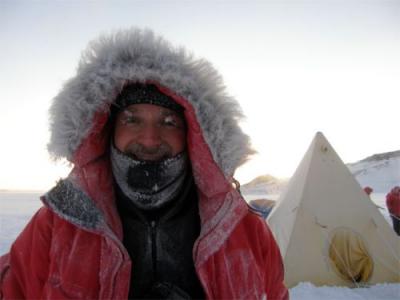
Here is Marcus saying goodnight to his wife and kids in Pennsylvania before he heads into his snow trench. The Scott tent is behind him.

